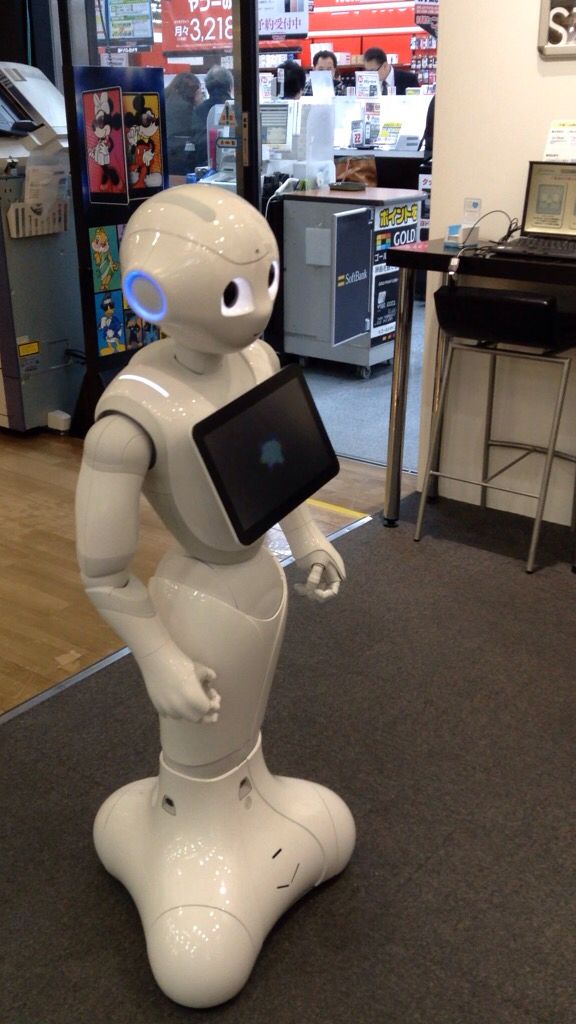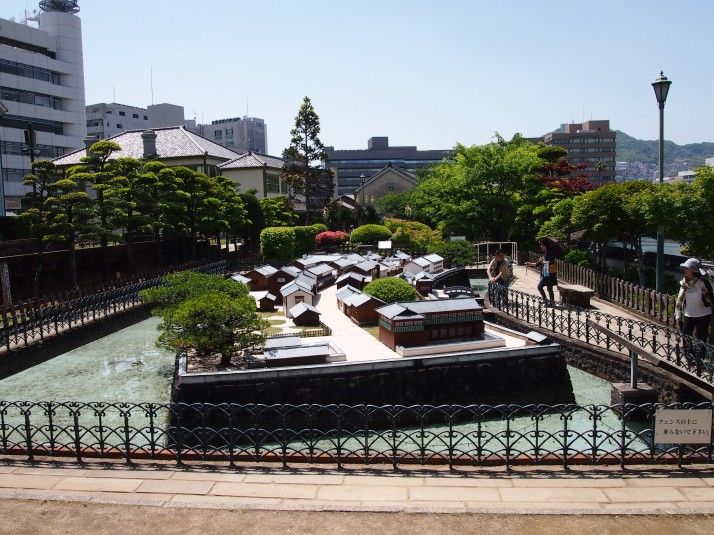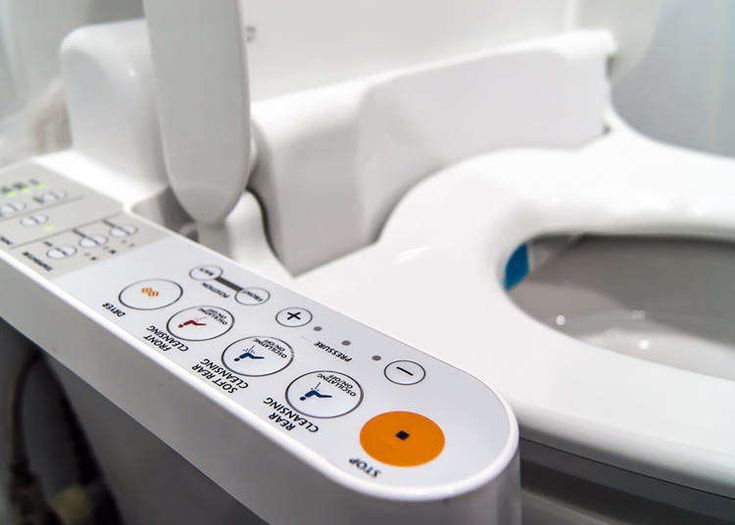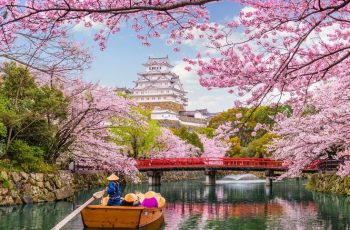Every culture is different, and every country is unique. What might seem commonplace in one corner of the world can appear wonderfully peculiar to people from another. From high-tech solutions for everyday life to deep-rooted cultural traditions, Japan offers a fascinating glimpse into a world that operates by its own unique rules.
Here are 20 things you’re unlikely to see anywhere else but in the Land of the Rising Sun.
20. A Robot for Every Occasion

While many developed nations have embraced robotics, Japan is a world leader, integrating robots into society in ways that are still science fiction elsewhere. Faced with a rapidly aging society and a declining population, Japan has ingeniously plugged gaps in the workforce with mechanical helpers. It’s not uncommon to see cleaning robots zipping around homes and schools, security robots patrolling office buildings, and even advanced humanoid robots serving as companions in nursing homes, where they’ve been found to have a positive effect on dementia patients. More than just labor, they are becoming companions, with some elderly owners treating them as child-like family members.
19. The Sheer Scale of Tokyo’s Population

Tokyo is one of the largest and most densely populated urban sprawls in the world. The Greater Tokyo Area is home to over 37 million people—more than the entire population of Canada—packed into 844 square miles. A quarter of Japan’s entire population lives here. This incredible density has shaped much of the culture, from the size of apartments to the efficiency of its public transport. Despite this historical growth, Japan as a whole is now experiencing a population decline, making it one of the oldest countries in the world.
18. Kids Clean Their Own School
In most countries, janitorial staff are responsible for keeping schools clean. In Japan, that job belongs to the students. From the first grade through high school, children spend time at the end of each day sweeping, mopping, and tidying their classrooms, hallways, and even bathrooms. This long-standing tradition is not about cutting costs; it’s a core part of the education system, designed to teach children responsibility, respect for their surroundings, and the importance of teamwork.
17. Living in Small Apartments
The tiny home movement may be a recent trend in the West, but in Japan, it’s been a way of life for decades. With urban space at an absolute premium, many people live in incredibly small apartments, some as tiny as 10 square meters (110 sq ft). This has led to brilliant innovations in multi-purpose living. Futons that serve as a couch by day and a bed by night are standard, and clever storage solutions are a must.
16. A Unique Fitness-Themed Bar
Only in Japan could you find a place like “Muscle Girls”—a bar that doubles as a women’s gym. Founded by fitness enthusiast Eri Muscle, the establishment serves drinks and is staffed by muscular women who serve as bartenders and fitness trainers. Patrons can enjoy a drink, watch the staff perform dance and fitness routines, and even get in a workout themselves. It’s a one-of-a-kind fusion of fitness and entertainment.
15. Kawaii Fashion
Kawaii, the Japanese culture of cuteness, is most visibly expressed through its unique fashion. Characterized by bright pastel colors, child-like accessories (like bows, frills, and cartoon characters), and an overall aesthetic of innocence, Kawaii fashion is a prominent subculture. The trend exploded in the 1970s and is now a global phenomenon, with dedicated stores like 6%DOKIDOKI and brands like Hello Kitty leading the way.
14. Vending Machines Everywhere
Japan has the highest density of vending machines in the world, with roughly one for every 23 people—that’s nearly 5 million machines nationwide! But it’s not just the quantity that’s stunning; it’s the variety. Alongside the typical soft drinks, you can find vending machines dispensing hot meals like ramen, fresh produce, sake, beer, cigarettes, and even flowers. This level of convenience is made possible by Japan’s remarkably low crime rates.
13. Smart Toilets

Prepare to be amazed the first time you use a toilet in Japan. Many are high-tech marvels with a dizzying array of functions controlled by a panel next to the seat. Features often include a heated seat, a variety of bidet spray options (including adjustments for pressure and temperature), a warm air dryer, and a sound function to mask any embarrassing noises. Some of the most advanced models are even self-cleaning, using electrolyzed water to disinfect the bowl after every use.
12. Limited-Edition Kit-Kats
Forget plain milk chocolate. In Japan, the Kit-Kat is not just a candy bar; it’s a culinary adventure. The country is famous for its hundreds of unique and limited-edition Kit-Kat flavors, many of which are specific to certain regions or seasons. You can find everything from raspberry and green tea to more daring flavors like purple sweet potato, wasabi, and Japanese sake. They are a wildly popular souvenir for tourists and locals alike.
11. Futuristic Capsule Hotels
Born from the need for cheap, no-frills accommodation for businessmen who missed the last train home, capsule hotels have become a signature Japanese experience. These hotels offer tiny sleeping pods stacked in rows, providing just enough space for a bed and a few personal items. While some are basic, others are futuristic and surprisingly comfortable, offering modern amenities like personal TVs and charging ports for a fraction of the cost of a traditional hotel room.
10. Lavish Love Hotels
Discreet and often extravagantly themed, “love hotels” are short-stay accommodations designed for couples seeking privacy. The concept arose in the 1960s when it was common for multiple generations to live in the same house, making alone time difficult to find. Today, these hotels are a major industry, with rooms that can be rented by the hour or for the night. You can find everything from a Hello Kitty-themed room to a medieval dungeon.
9. Free Tissues
In many countries, street marketers hand out flyers that are often immediately discarded. In Japan, they came up with a much smarter solution: free pocket-sized tissue packs. Companies emblazon their branding on the packaging, knowing that a useful item like tissues is far more likely to be kept and seen repeatedly by potential customers. It’s a simple, yet brilliant, marketing tactic.
8. Wet Towels Before Meals
When you sit down at almost any restaurant in Japan, you’ll be presented with a hot or cold wet towel called an oshibori. This is a traditional gesture of hospitality, meant for you to clean your hands before your meal. The temperature of the towel changes with the season—hot in the winter and refreshingly cool in the summer.
7. Randoseru Backpacks
Walk by any elementary school in Japan, and you’ll see every child carrying the same style of sturdy, boxy backpack. This is a randoseru, and it’s a non-negotiable part of a child’s school life. These leather backpacks are incredibly durable and are expected to last all six years of elementary school. They are a significant rite of passage, and though expensive, they are a cherished cultural symbol.
6. Kotatsu for Comfortable Winters
Many traditional Japanese homes have thin walls and lack central heating, making winters quite chilly. The solution? The kotatsu. This is a low wooden table frame with a heavy blanket or futon draped over it. Underneath, a built-in electric heater keeps the space warm. The entire family gathers around the kotatsu to eat, chat, and stay cozy during the cold months.
5. Blue Traffic Lights
It’s a universal rule: green means go. But in Japan, the “go” light is often a distinct shade of blue. This is due to a linguistic quirk; historically, the Japanese language used the same word, ao, to describe both blue and green. To honor this tradition while still complying with international traffic laws, the government mandated that the “go” light be the bluest shade of green possible.
4. Otoshi Dishes You Didn’t Order
If you visit an izakaya (a Japanese pub), you may be surprised when a small appetizer dish is brought to your table shortly after you sit down, even before you’ve ordered. This is otoshi, and it’s not a mistake or a freebie. It functions as a compulsory table charge, and the dish you receive is often a specialty of the house, ranging from pickled vegetables to simmered meat.
3. Name Plates on Houses
In most Western countries, houses are identified by numbers. In Japan, it’s common to see a family’s name displayed on a nameplate, or hyōsatsu, at the entrance to their home. This tradition has practical roots, originating after the Great Kantō Earthquake of 1923 to help locate people and deliver mail amidst the devastation. Today, it remains a proud display of family identity.
2. Yuru-kyara
Japan is a nation obsessed with mascots. Known as yuru-kyara, these characters are created to promote literally everything: prefectures, cities, airports, companies, and public service campaigns. There are thousands of them, each with a unique (and often bizarre) design intended to be lovable and represent a local product, landmark, or piece of folklore.
1. Rice Paddy Art
In the village of Inakadate, farming has been elevated to an incredible art form. Here, farmers and volunteers use different varieties of rice plants—in shades of green, purple, yellow, and white—to create enormous, intricate murals in their rice paddies. These stunning works of “tanbo art” can only be fully appreciated from an observation tower and have turned the small village into a major tourist destination, drawing thousands of visitors each year.

